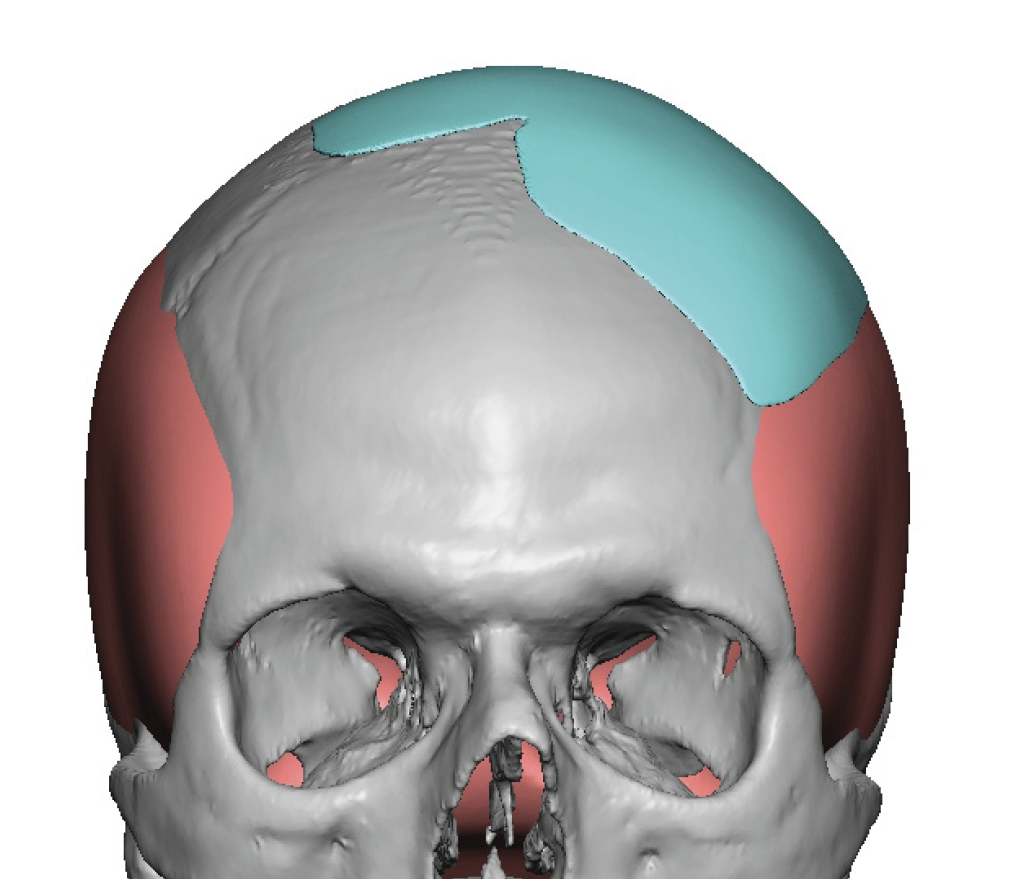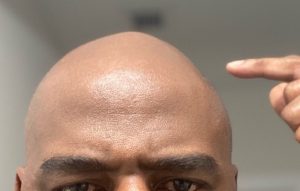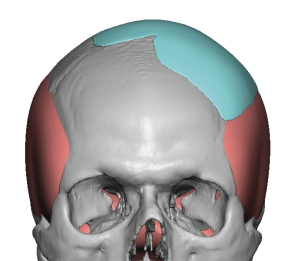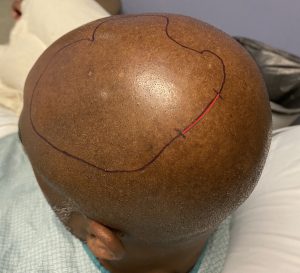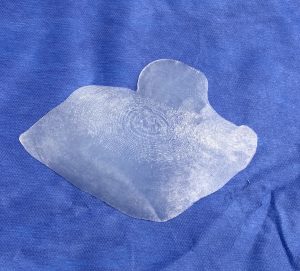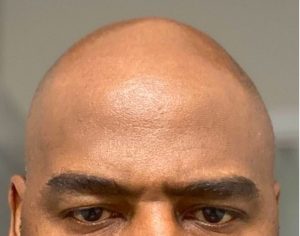Background: The skull is an overall oblong shape that has five distinct surfaces to it. (front, back , top and two sides) The main anatomic ‘dividing line’ between all of these surface of the bony temporal line. This is a distinct raised ridge of bone that starts at the tail of the brow bone anteriorly and extends along the side of the head until it reaches the back of the head. It exists because it is the broad origin of the temporalis muscle. What that means from a surface area standpoint is that it is the dividing line between the top and side of the head. (as well as the front and back of the head as well)
The shape of the skull is prone to a wide variety of asymmetries, almost all of which involve more than one of its five surface areas. This is typified by asymmetries of the top of the head which can involve the sagittal, parasagittal and the temporal line. Almost all parasagittal skull deficiencies cross the bony temporal line or at least have a flatter temporal line than the opposite side. The relevance of that anatomy is that the skull augmentation needed to correct it must partially be on bone but, as it crosses the bony temporal line, must transition onto the top of the muscle. (deep temporal fascia) This again shows that almost all skull asymmetries involve at least two skull surfaces due to its natural convex shape.
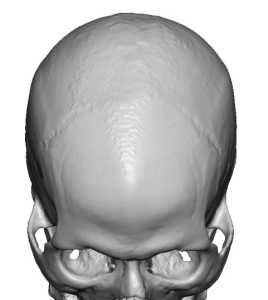
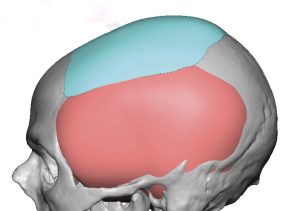
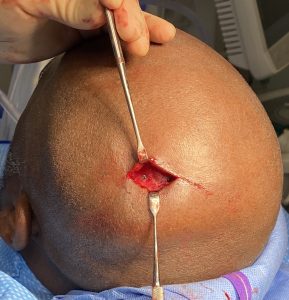
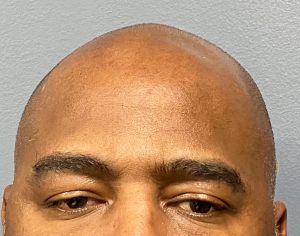
Some skull asymmetries can be more modest or subtle while others are more significant in size. Many of the more modest skull asymmetries present in the shaved head male patient where the smooth and completely exposed scalp can be seen. Between the full exposure and the light reflections off of the scalp even minor skull asymmetries can be aesthetically bothersome. While any size for surface area skull implant can be designed it is of equal importance that it is capable off being placed through the smallest possible scalp incision. The smaller the skull augmentation the more important it is that the scalp incision to treat it is equally small. This case illustrates that exact point with the placement of a skull implant through an incision that does not even seem possible.
Case Highlights:
1) One unique type of skull asymmetry involves the top of the head along the parasagittal and upper temporal regions.
2) The top of the head is separated from the side of the head by the bony temporal line of which a parasagittal skull deficiency often crosses that line when the top of the head is asymmetric.
3) A custom skull implant of a discrete thickness can be designed and placed for top of head asymmetries.
Dr. Barry Eppley
Indianapolis, Indiana

